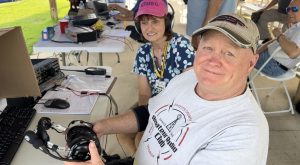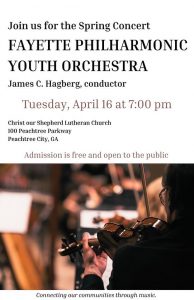For Whitewater High School parent Darrell Baker and McIntosh High School parent Sally Herman it is an idea whose time has come. The two parents at the March 5 meeting of the Fayette County Board of Education proposed that the next penny sales tax for education (ESPLOST) include funding for synthetic turf fields at each of the county’s high schools.
Herman at the outset of the presentation said the objective was to provide all five Fayette County high schools with synthetic turf fields with the hope of having the proposal included in the next ESPLOST initiative. Herman and Baker explained that, if agreed to by the board, voted in by residents and installed, their children would have already graduated.
Baker and Herman during the presentation were quick to note that they would not want the inclusion of turf fields in an upcoming ESPLOST list to jeopardize or defeat the overall initiative.
Herman said the initial cost of turf fields is high, though over a 10-year period those fields cost less to maintain than grass fields. Outlining the total cost of installing and maintaining grass fields and synthetic fields over 10 years, Herman said grass fields come in at $480,500 while turf fields have a cost of $629,000. Noting that there is more to the story, Herman said that grass fields over 10 years can sustain 10,000 hours of play while turf fields can accommodate 30,000 hours of play. That difference translates into a per hour cost of $48 for grass fields and $21 for turf fields, she said.
“It boils down to grass not being able to take the amount of play consistently. The fields are decimated after spring sports,” Baker said, noting the difficulty parents have in getting the fields in shape for the sports coming up later in the year. It is an expense paid not by the school system, but by booster clubs and parents.
The total cost for all five high school fields to have turf installed would be an estimated $3.12 million and would carry a 10-year lifetime. Herman said that having synthetic turf re-surfaced after 10 years amounts to about 60 percent of the original cost since some of the work would not have to be repeated.
As for their reasoning to switch to synthetic turf, Herman said she believed the fields would add to the county’s property values because it would show that Fayette is aware of the value of maintaining and upgrading facilities to stay competitive with surrounding metro Atlanta high schools such as Coweta County that is installing synthetic turf at its three high schools.
“We want to be a community that invests in itself,” Herman said.
Turf fields would also create a venue for tournaments and state championships in a variety of sports, Herman said, and they create venues for city recreation departments to rent the facilities for league play and tournaments.
Turf fields carry a number of benefits, said Herman, adding that the most important benefit is that turf fields provide for unlimited use.
Baker said grass fields can be used for approximately 1,000 hours per year. The number of hours is limited by the damage done to the grass surface and the time needed to remediate the damage. The available play time on synthetic turf is essentially unlimited, providing the ability to sustain play for the 3,000 hours that would meet the requirements of all applicable sports year-round.
Herman said other examples of the benefits of turf include a 10-year lifetime, less expense to maintain compared to grass, no risk of user sensitivity to chemicals applied to grass fields, permanent paintings and markings, no loss of the field due to wet conditions, less concerns over safety because turf fields are softer than grass fields and virtually no maintenance issues.
Asked by Superintendent Jeff Bearden how much the school system spends on the fields, Facilities Director Mike Satterfield said the school system pays for lights and water only. Satterfield said the school system used to help apply sand for top dressing at a cost of $10,000 per year but had to abandon that practice three years ago.
Satterfield agreed with Baker and Herman that the overwhelming cost of maintaining the football fields rests with parents in the form of booster clubs or athletic funds.
Baker added that the cost of maintaining the fields for football runs approximately $35,000 per year. That does not include the cost of approximately $1,000 per year per student to participate in a sport, he said.
Addressing community concerns about turf fields, Herman said those concerns tend to be based on misinformation.
Pertaining to safety and injuries, Herman said studies have shown that there is virtually no difference in injuries on grass versus synthetic turf.
And in terms of money, Herman said a voter-approved ESPLOST would be an extension of the current penny sales tax, not a new one, with revenues coming from anyone who spends money in Fayette County.
Another concern relates to why turf fields would be considered given potential cost-cutting measures such as teacher furloughs. Herman said if put on the ballot and approved by voters, the ESPLOST is used for capital improvements and cannot be used for salaries.
And again noting the expense, Herman reiterated the points she and Baker had made moments earlier where the per hour cost is less for turf.
Baker and Herman asked if the school board would consider putting a survey on the school system website to get public input on the issue. After a discussion on the request Bearden said a draft survey would be completed and returned to the school board for consideration.
Meantime, Herman and Baker said they are in process of securing what they hope will be 10,000 signatures in support of the proposed turf fields project.
“School systems don’t have the money that they used to. These sports parents have invested an extreme amount of money,” Baker said, noting a cost of $3,000-5,000 when his three children played on sports teams.
Bearden and board members thanked Herman and Baker for the detailed presentation.
“We couldn’t have the athletic program we have without parents like these two,” Bearden said.
The current one-penny ESPLOST expires in April 2014 and could be put before voters as early as November.












Leave a Comment
You must be logged in to post a comment.